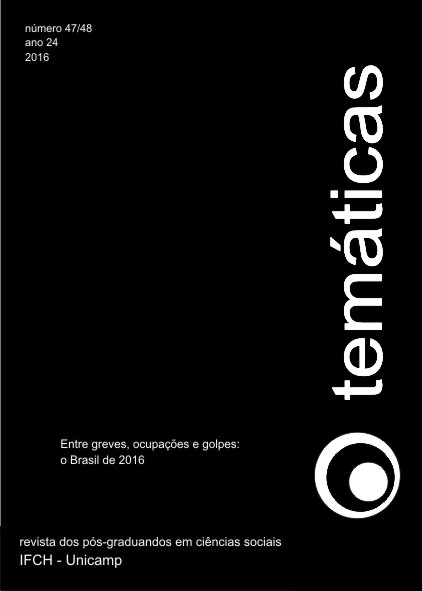Abstract
The objective of this text is to characterize minimally the dynamics of commercialization of Chilean education, from the period of the military dictatorship to the present day, in light of the most recent expressions of the student movement, which in two successive waves of organizations and protests, 2006 and 2011, managed to claim the need to rethink education as a universal and free right, thus generating a wide-ranging questioning of the type of neoliberal society conceived since the authoritarian period (1973-1989), but also shielded and perfected since later democratic governments. This reflection and exposition of conjunctures is carried out in the first place seeking to identify and map some relevant historical events, but at the same time, we allow ourselves a reflective exploration around two dimensions, that of gender and ethnicity, which seem to us still poorly understood and / or invisibilities in the political and social representation of this movement.
References
ALONSO, C. PIB per cápita de Chile (PPP) llega a US$23.563 en 2015, pero a 2020 se aleja de desarrollados. Pulso – Pasión por los negocios.Santiago. p. 4D, 07 oct. 2015.
DE SOUSA SANTOS, Boaventura. Los nuevos movimientos sociales. Osal, 2001, vol. 5, p. 177-188.
CHILE. Decreto 326, de 27 de mayo de 1989. Promulga el Pacto Internacional de Derechos Económicos, Sociales y Culturales, adoptado por la Asamblea General de la Organización de las Naciones Unidas, el 19 de diciembre de 1966, suscrito por Chile el 16 de septiembre de 1969. Disponible en: http://www.leychile.cl/Navegar?idNorma=12382. Acceso en: 10 sept. 2016.OCDE. Estudios económicos de la
OCDE – Chile. 2015. Disponible en: https://www.oecd.org/eco/surveys/Chile-2015-vision-general.pdf. Acceso en: 10 sept. 2016.
DONOSO, A. y DRAGNIC, M. Hacia la universidad pública: aproximación a la importancia del movimiento estudiantil chileno de 2011 en perspectiva latinoamericana. En: ACOSTA, A. et al. Los desafíos de la universidad pública en América Latina y el Caribe. Buenos Aires: CLACSO. 2015.
DRAGNIC, M. La primavera de Ricardo Lagos – Una crítica feminista al capitalismo y al patriarcado en Chile. Le Monde diplomatique. Santiago. May. de 2016.
LETELIER, M. Recursos públicos para educación superior: La histórica diferencia de las universidades estatales. CIPER – Centro de Investigaciones Periodísticas. Santiago. 7 de nov. de 2014. Disponible en: http://ciperchile.cl/2014/11/07/recursos-publicos-para-educacion-superior-la-historica-diferencia-de-las-universidades-estatales/. Acceso en: 10 sept. 2016.
ONU. Pacto Internacional de Derechos Económicos, Sociales y Culturales, de 16 de diciembre de 1966. Disponible en: http://www.ohchr.org/SP/ProfessionalInterest/Pages/CESCR.aspx. Acceso en: 10 sept. 2016.
VALENZUELA, G. Desigualdad en Chile: El 10% más rico gana 26 veces más que el 10% más pobre. El Mostrador – Blog y Opinión. Santiago. 9 de ene. de 2016. Disponible en: http://www.elmostrador.cl/noticias/opinion/2016/01/09/desigualdad-en-chile-el-10-mas-rico-gana-26-veces-mas-que-el-10-mas-pobre/. Acceso en: 10 sept. 2016.

This work is licensed under a Creative Commons Attribution-NonCommercial-ShareAlike 4.0 International License.
Copyright (c) 2016 Mía Dragnic García, Raúl Ortiz-Contreras

